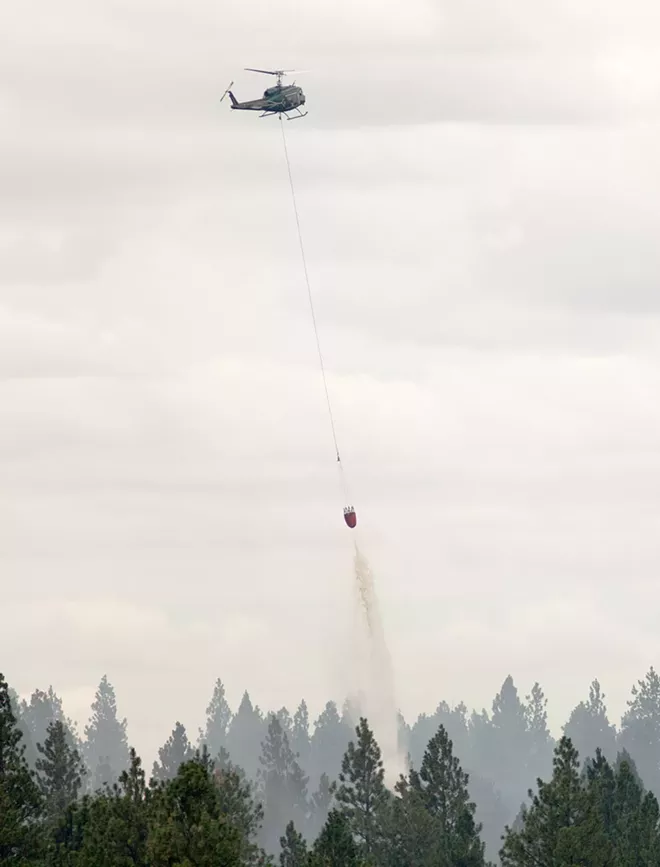
The hazy, smoky air still makes my stomach curdle with fear.
I was 4 when the regional disaster known as Firestorm torched the Spokane area. On Oct. 16, 1991, heavy winds downing power lines sparked more than 90 separate fires around the Inland Northwest, burning more than 100 homes and blackening the land all around. I vividly recall Firestorm’s terrifying uncertainty, and now view it as one of the most impactful events of my childhood, growing up on 20 wooded, rural acres in Stevens County.
After the first flames ignited and sent embers flying, my parents quickly packed up our valuable belongings — antique furniture, family heirlooms, photographs and important documents — and rented a storage unit in Spokane. My mom packed clothing and we made the short drive to my grandparent’s 80-acre farm above our home on a hill. It was safer there, with more routes out if the fire moved in. One night during the fires, my dad took me outside, lifting me up on his shoulders. There, in my striped nightgown, I saw the mountain vista in front of our homes glowing with orange flames against the black night sky.
We were lucky. The firestorm burned for days all around the region, but our land and our homes remained untouched. It was the first memory I’d have of many more fires to threaten our rural community. Each one filled me with more terror than the last. Just as anxiety-causing were summer’s hot, dry spells, lightning storms and windy days that all meant high fire danger. The fires alone didn’t make fear course through my body, but the materialistic thought of losing everything in a fire’s wake.
As residents across the Inland Northwest woke up this past Friday morning to a brown sky blocking out the rays of a blood red sun, the dense ashy air left a fine, grayish-black powder on everything it touched. Street lights stayed on long past sunrise, and the world was cast in an ominous, yet eerily beautiful, goldish glow. These remnants of wildfire stirred up my long-dormant feelings of dread. I tried to imagine the emotions of residents of Central Washington — the people in Brewster and Pateros who lost everything in the still burning Carlton Complex fire. In place of a desire for empathy was something stronger — guilt. Guilt that here I was, conjuring up old childhood fears of losing my home to a raging wildfire when they just had.
When natural disasters — tornadoes, hurricanes, mudslides, earthquakes, tsunamis and forest fires — strike, our collective reaction is to consume breaking news reports. We become almost morbidly fascinated by the images and stories of destruction fed to us, all so accessible on our social media accounts. At the same time we ache for the losses of others due to what’s largely attributed a random event. The Carlton fire was sparked by lightning; the whims of changing winds paired with the intense summer heat propelled it toward towns with little warning.
Every region of the world comes with its own set of natural threats. Those who choose to call these places home do so with some understanding of the chance they might be affected by a mostly unpredictable disaster. But until one happens to or close to us, that probability doesn’t dominate our thoughts.
Most of us will never lose our homes to wildfires. But when we see it happen on such a tragically large scale like the Carlton Complex fire, we’re reminded of our vulnerability to the odds and also comforted by it. Homes can be rebuilt and things replaced, but the scars of any disaster will live on in the landscape and its victims memories forever. ♦
